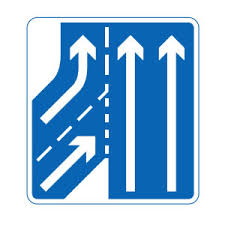Road Rage Driving
Whether for work or leisure, can be enjoyable
but at times is stressful and demanding. Drivers need to be fit, relaxed and
rested for the demands of safe travel. Good driving requires a responsible
attitude to other road users as well as a high level of concentration,
observation and anticipation. The reality is, however, that everyone makes
mistakes.
Our attitude as drivers, how we deal
with our own mistakes and our reaction to those made by other people, will
influence our own safety and well-being and that of other road users around us.
Aggressive, selfish or impatient attitudes influence the way we drive. This can
develop into a tendency to take irresponsible risks, such as tailgating,
exceeding speed limits, undertaking, or jumping red lights.
Our
emotional mood also influences our behaviour; drivers commonly express how they
feel in the way they drive. Traffic delays and congestion can also influence
our frame of mind. Life stresses such as relationship anxieties, financial or
employment problems, domestic or workplace arguments (to highlight only a few)
influence our mood and can affect our attitude to driving and safety behind the
wheel.
Many
drivers find different ways to keep calm but here are some suggestions on
dealing with, and avoiding, potential conflict, "road rage" or red
mist.
Before
You Set Off
· When we are emotionally upset or psychologically caught up
in something else, we are not able to give the road our full attention and so,
do not drive safely. Try to ensure you are in a calm, good mood before driving.
· Plan time into journeys in case you are delayed by traffic;
this can help to alleviate the pressure you feel if you're running late.
During Your Journey
· Whilst driving do not over-react
to, or panic about, another driver's error, bad driving or poor attitude. They
may be unaware of their actions. Try to stay away from them and concentrate on
driving well and within the law.
· Avoid getting into conflict with
another
driver. There will be some bad drivers who are looking for a reaction
or conflict. "Competing" with another driver could lead to the
incident becoming serious. Keep your mind focused on your driving.
· Stay calm and think logically –
when confronted by an irate driver don't engage in gestures, headlight flashing
or sounding the horn as this will serve no purpose and may exacerbate the
situation. It will also distract you. Concentrate on driving responsibly.
· Refrain from eye contact with an angry
or aggressive driver as this has the potential to make the situation worse.
· If you find you are being followed
by an impatient driver (tailgated) – do not allow yourself to be
"pushed" along, intimidated or made to increase your speed. Without
actually pulling over or stopping – find a safe opportunity to allow that
driver to pass. Circumnavigating a roundabout to enable a tailgater to get past
you will add little time to your journey but can make a significant difference
to stress levels.
· If you find that you are being
persistently followed by an aggressive driver – try to make your way to a
public place, police station or busy street and if necessary call the police.
Do not allow an aggressive driver to follow you home.
· Under no circumstances should you
endanger your safety or well-being by getting out of the car to deal with an
angry or aggressive driver. If confronted with a road rage situation remain in
the car with the windows closed and doors locked. If necessary, call for help
on a mobile phone (not while driving).
· If you accidentally cause another
driver to become angry – hold up your whole hand as a friendly acknowledgement
of your mistake – this can diffuse the situation.
· If your mood is affected by an
incident during your journey, once you have moved away from any danger, find an
opportunity to stop and take time out. · Focus on the present and your driving rather than the
destination or purpose of the journey. After Your Journey
· If you are able to recognise when
you're becoming stressed, angry or impatient while driving, you will be better
equipped to deal with these emotions. Try to find time occasionally to reflect
on your driving and think about how mood or stress has effected your actions.












